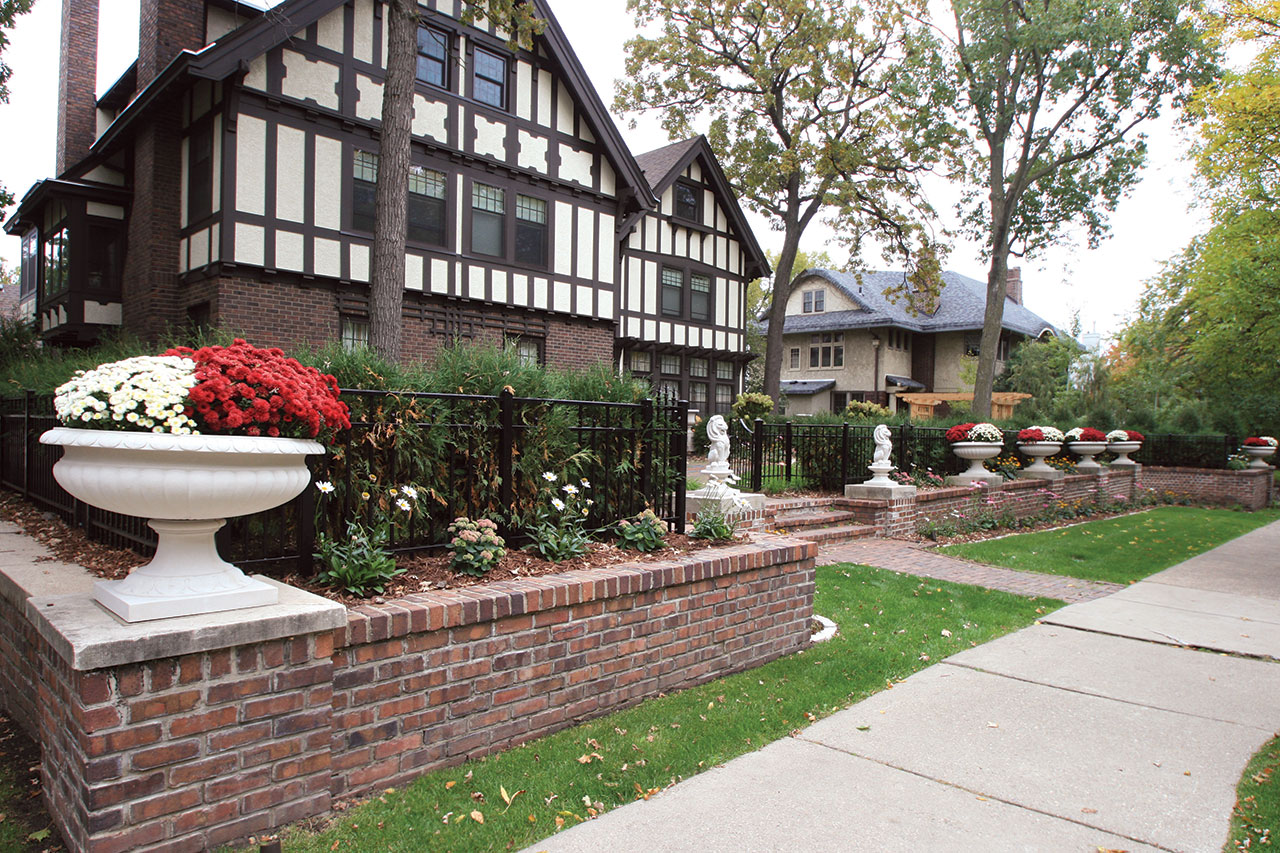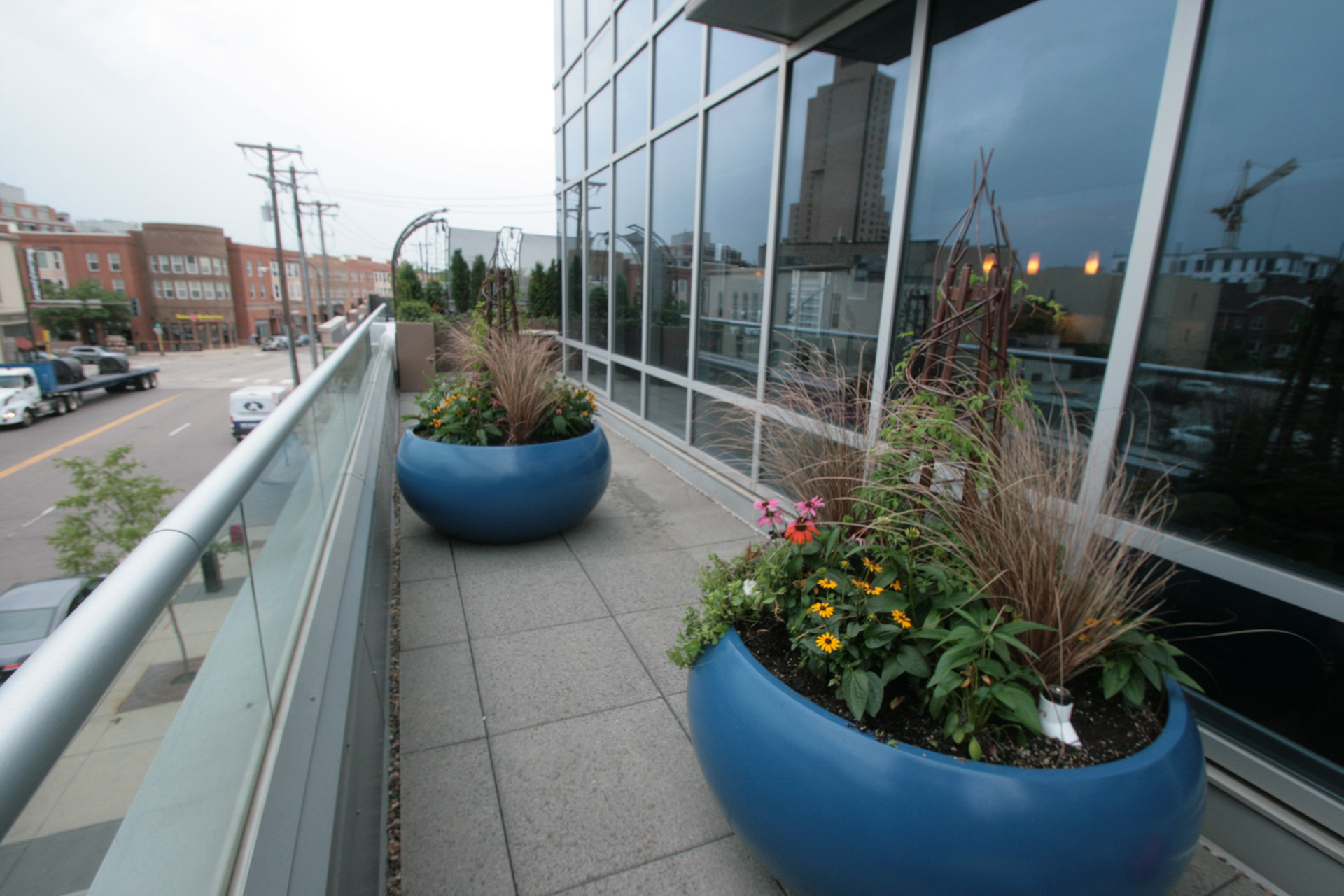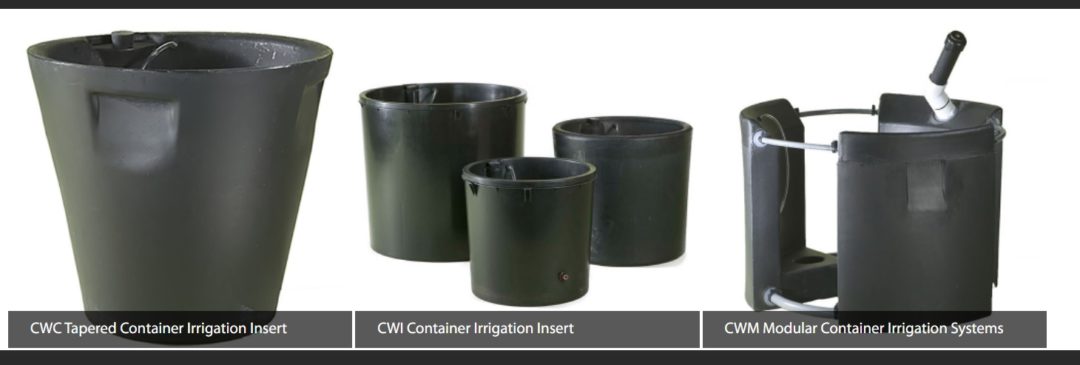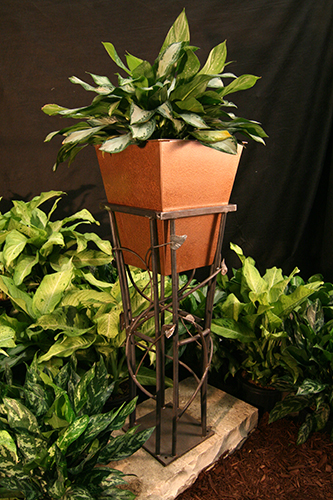It’s that time of year again when we all want to get our planters full of vegetation and color again! Yes, please, no more brown! And please bring on the warmth of the SUNSHINE! Growing season is about to begin again! We wanted to give you some helpful care tips and FAQ’s that we get asked about our planters and containers.
Containers We Currently Carry:
- Haddonstone (cast stone)
- Gardenstone (glazed concrete)
- Tournesol (fiberglass)
- Metalsmith’s (metal).
Haddonstone (Material: Cast Stone)
Haddonstone produces the finest quality cast stone products. Many clients like the “weathered or aged” look of cast stone. Haddonstone products weather relatively rapidly, of course the speed of weathering is dependent on location and climate. The process of weathering can be encouraged by the application of either yoghurt, manure or water! Alternatively, if you want to achieve the instant aged look, they do offer a New Formula StoneAge product that is designed to give new stone the look of the weathered antique. Please inquire if interested!
- CLEANING: Haddonstone is normally admired for the way in which it weathers naturally so that it is imperceptible from quarried stone. If you do wish to clean your Haddonstone, we recommend that you first try using a mild solution of water and washing up liquid – when used in conjunction with a soft brush this can achieve good results. The use of acid cleaners or harsh abrasive scouring should be avoided as this will break down the surface of the product and it will become more porous and could make the product more susceptible to permanent staining. Be aware that natural dyes in composts containing peat, coconut husk or coir can produce a brown staining which is very difficult to remove. Many fertilizers contain ferrous compounds that can cause rust stains. Cast-in fixings and reinforcement used during the standard Haddonstone production process are non-ferrous, usually stainless steel.
- CARE: With careful handling, the Haddonstone cast stone material itself needs no special maintenance as long as it is not exposed to extreme conditions. For example, it is recommended that in very hot weather a planted cast stone garden ornament should be watered only in the early morning or cool evening. Likewise, in freezing conditions, cast stone fountain bowls should be emptied. The cast stonework is less susceptible to the detrimental effects of weathering, which can damage the laminated structure of quarried stone or natural stone, and can be aesthetically more pleasing as it often matures and develops character much earlier.
- SOIL: We recommend using a multi-purpose organic compost with Haddonstone planters to avoid any potential staining issues. We have never experienced any problems or issues with staining when using this type of compost. You can also use ericaceous compost. We have several planters in our show gardens that contain ericaceous compost – Rhododendrons, Azaleas, Pieris & Skimmias are in these planters and there is no unsightly staining, nor is there any discolouring of the stone.
GardenStone (Material: Glazed Concrete)
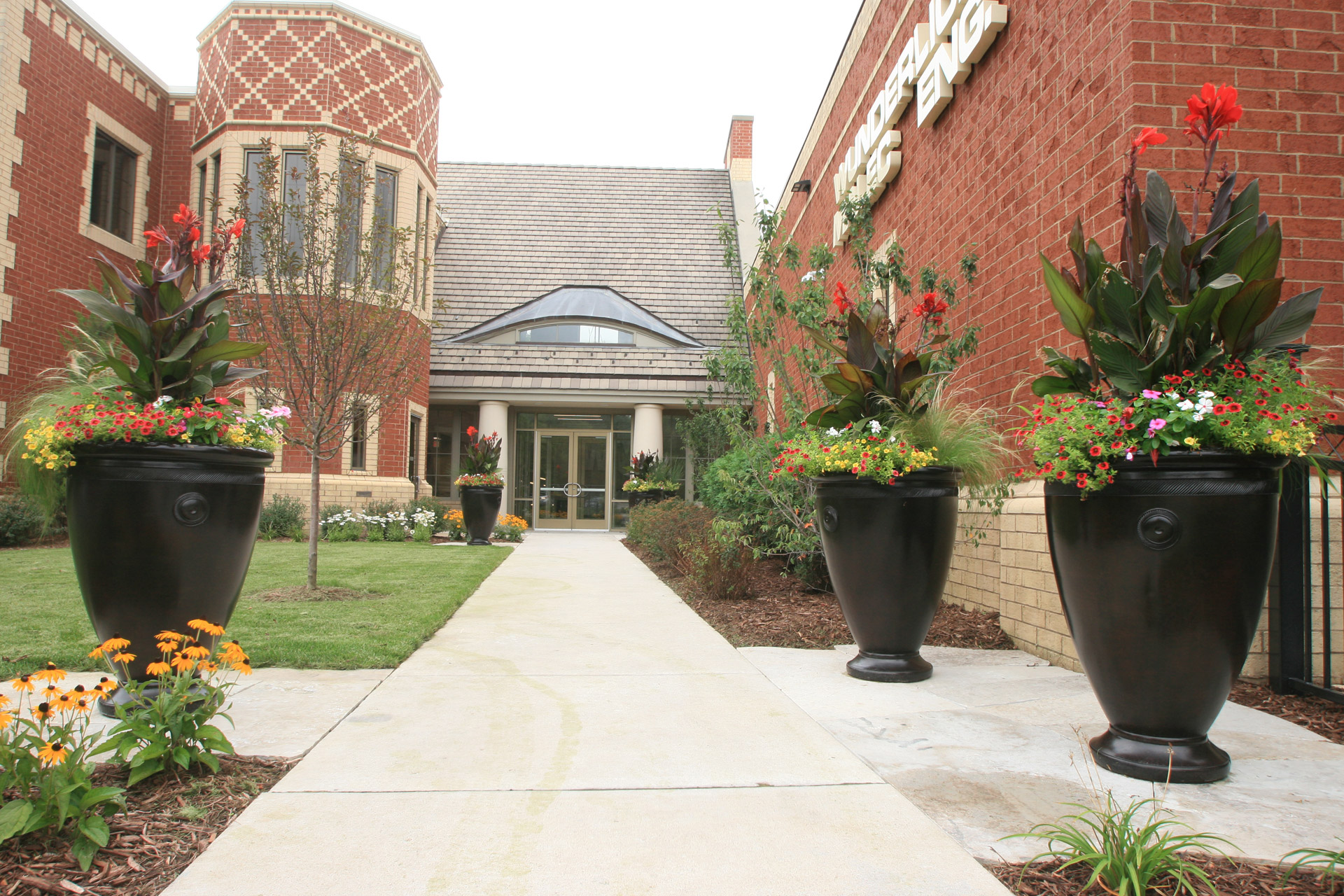
Gardenstone have a timeless designs and the hand crafted finishes will bring joy and pleasure to you now and well into the future. Gardenstone planters are constructed out of concrete and finished with a high quality glaze.
- CLEANING: To restore the luster of GardenStone’s Bronze and Black Stains – White vinegar can be used to wipe clean planters with a soft cloth.
- CARE: Your planter should have risers beneath them to ensure drainage hole does not freeze against the ground surface, as well as to remain above the frost line to prevent damage to the bottom of the planter. Planters should also be 2/3 full of ¾ or larger stone (used for drainage) to avoid a large amount of moist soil from freezing and expanding. Ensure planters are kept clear from harsh salts and chemicals, as these may damage the stains and/or concrete. Please NOTE: Trapped Water in Any Planter, Once Frozen, Will Expand and May Cause Damage.
- SOIL: (Step 1) Fill planters a minimum of 2/3 full, with a clear gravel or aggregate ¾” or larger. This will weight the bottom of the planter to prevent tipping and provide adequate drainage. (Step 2) Filter cloth can be placed on top of the gravel to prevent soil from draining through the bottom drainage hole and /or clogging the aggregate. (Step 3) Soil can then be put on top of the filter cloth and gravel.
Tournesol (Material: Fiberglass)
Tournesol’s state-of-the-art FRP (fiber-reinforced plastic) fiberglass planters offers ranges of finishes and textures that can mimic the look of metals while also delivering durability. The FRP colors deliver richer paint finishes to provide vibrant additions to otherwise dull areas. FRP fiberglass couples lightweight and incredible strength to provide a product that you can depend on.
- CLEANING: Smooth finishes gently scrub with soap & water applied with a soft brush or sponge. Do not use abrasives on standard (painted) finishes. Textured finishes clean with soap & water applied by a gentle spray from a pressure washer. Do not scrub textured finishes with stiff brushes, steel wool, or other abrasives. Metal Infused finishes with light scratches, surface imperfections, or blemishes can be removed by buffing the surface with fine (#00) steel wool or a Scotchbrite pad. This will also remove any patina that has developed!
- CARE: The interior of our FRP planters are sealed with black gel coat resin. To ensure pots in interior applications never leak, we recommend using a shallow plastic saucer inside the container. For exterior applications, the pot should have a hole cut into the bottom or side. Otherwise, a pump-out (or siphon) tube should be used to remove water from the pot. Water standing at the bottom of the pot over a long period will harm the plant and may break down the gel coat sealant. NOTE: Take care not to push or pull full-planted pots by the top lip.
- SOIL: Use of a good grade of a soilless potting mix when using any container irrigation system (Insert Liner or CWM – See examples below). We typically recommend a blend of approx. 1/3 peat, 1/3 composted organics, and 1/3 sand, or expanded slate or shale. This blend has good capillary action, but still has enough structure so it doesn’t compact and still drains.
MetalSmith’s Designs (Material: Metals)
MetalSmith’s is a custom metal fabrication company, so each piece is unique. Caring for metal is dependent on what type of metal and finish you choose.
- CLEANING: Smooth finishes gently scrub with soap & water applied with a soft brush or sponge. Do not use abrasives on standard (painted) finishes. Textured finishes clean with soap & water applied by a gentle spray from a pressure washer. Do not scrub textured finishes with stiff brushes, steel wool, or other abrasives.
- CARE: To ensure pots in interior applications never leak, we recommend using a shallow plastic saucer inside the container. For exterior applications, the pot should have a hole cut into the bottom or side. Otherwise, a pump-out (or siphon) tube should be used to remove water from the pot.
- SOIL: We typically recommend a blend of approx. 1/3 peat, 1/3 composted organics, and 1/3 sand, or expanded slate or shale. This blend has good capillary action, but still has enough structure so it doesn’t compact and still drains. You can also install gravel or aggregate at the very bottom of the container for optimal drainage.
We hope this helps answer questions or concern you may have. As always, feel free to reach out to us with any additional questions or concerns. We hope you all have a wonderful spring and a sunny summer filled with color and warmth!

